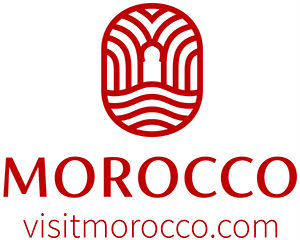El Jadida was first known as al-Breyja when it was seized by the Portuguese in 1502. Then it became known in the Portuguese language as Mazagão. The Portuguese built a citadel in 1514, and a larger fortification in 1541. The Kingdom of Portugal would continue to control the city until 1769, when they abandoned Mazagão, their last territory in Morocco. Upon their forced departure, the Portuguese destroyed the Governor's Bastion and evacuated to the Portuguese colony of Brazil, where they founded a new settlement called Nova Mazagão (now in Amapá).
The city was then taken over by Sultan Mohammed ben Abdallah in 1769 and remained largely uninhabited, having been dubbed al-Mahdouma ('The Ruined'). Eventually, Sultan Abd al-Rahman of Morocco ordered that a mosque be built, and the destroyed portions of the city were rebuilt during his reign in the early nineteenth-century. The reinvigorated city was renamed al-Jadida, meaning 'The New'.
The design of the Fortress of Mazagan is a response to the development of modern artillery in the Renaissance. The star form of the fortress measures c 250m by 300m. The slightly inclined, massive walls are c 8m high on average, with a thickness of 10m, enclosing a patrolling peripheral walkway 2m wide.
At the present time the fortification has four bastions: the Angel Bastion in the east, St Sebastian in the north, St Antoine in the west, and the Holy Ghost Bastion in the south. The fifth, the Governor's Bastion at the main entrance, is in ruins, having been destroyed by the Portuguese in 1769. Numerous colonial-era Portuguese cannons are still positioned on top of the bastions.
The fort had three gates: the Seagate, forming a small port with the north-east rampart, the Bull Gate in the north-west rampart, and the main entrance with a double arch in the centre of the south rampart, originally connected to land via a drawbridge. A ditch, c 20m wide and 3m deep, formerly filled with seawater, surrounded the fort. During the time of the French Protectorate the ditch was filled in with earth and a new entrance gate was opened leading to the main street, the Rua da Carreira, and to the Seagate. Along this street are situated the best preserved historic buildings, including the Catholic Church of the Assumption and the cistern.

The Horse Show in El Jadida is a prestigious event bringing together, in a small space and for a limited period of time, exhibitors and visitors, thus representing a privileged meeting place and exchange. Participating in the Show is an opportunity to prospect markets, to meet the competition, to attract new customers, to demonstrate know-how, in an atmosphere conducive to exchanges.
As the Show has an international audience, it allows small and medium-sized businesses in particular to consider international development at a reduced cost compared to other prospecting tools.

-A study day on the 2025 Edition theme
-A redesigned exhibition area for an enhanced visitor experience
-Three equestrian nights instead of two, for even more magic and spectacle
-A rich and diverse program
-The International Arabian Horse Show classified as a Title Show, the highest rank awarded by the European Conference of Arab Horse Organizations (ECAHO)

from 09h00 to 18h00









































































